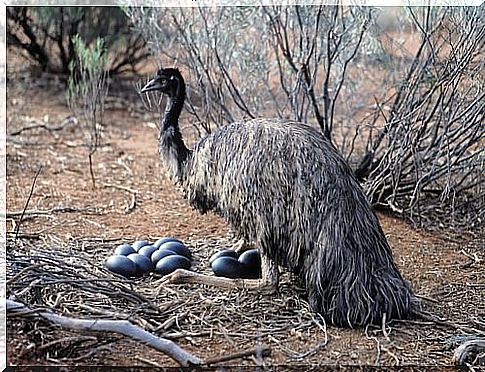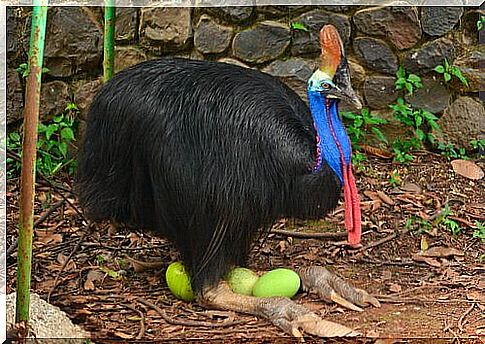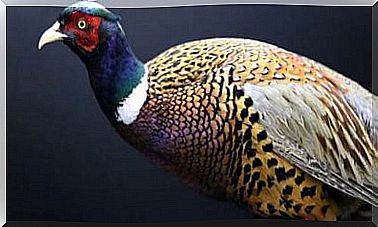The 5 Biggest Eggs In The World

The size of an ostrich is not the same as that of a normal sparrow … Not even when they are born. That’s why they need an appropriate shell for their development needs. In this article we will reveal which are the largest eggs in the world.
What are the biggest eggs in the world?
To get an idea of which are the eggs of the largest birds, it will be enough to analyze and refer to the size of some specific species. There are birds that, in their adult stage, acquire a very considerable size. In most cases, this ‘proportional rule’ works. So let’s see 5 examples that will not leave you indifferent:
1. Ostrich
The ostrich, as you can see in the image above, is one of the largest birds in existence and its eggs are the largest in the animal kingdom. They can measure 25 centimeters and weigh a whopping 2 kg. To give you an idea of its size, one egg is equivalent to 24 chicken eggs.
They are white or light yellow in color, as this prevents them from overheating due to the sun or the high temperatures of the savannahs, where ostriches live. When the chicks are born, they are of considerable size and it is the father who is in charge of taking care of them.
2. Emu
A direct member of the same family as the ostrich, this large, non-flying bird lives in Oceania and its plumage is dark gray. Up until a century ago they were very common to see, but now their population has decreased a lot.

One of the curiosities, in relation to the eggs of this species, is that they are dark green in color and, of course, large in size, almost like those of their close relatives, the ostriches.
Another similar feature is that the male is in charge of hiding them and taking care of the young when they are born. This is because he can mate with several females at the same time. The father is therefore responsible for the “surveillance” of all the children, even if they come from different mothers.
3. Kiwi
Although this New Zealand endemic bird is very small, the female lays eggs which can measure 14cm in height and 9cm in diameter.

The males have the task of hatching them for 10 weeks in the nests or underground burrows that the couple builds. It is interesting to know that the chicks are not fed by their parents, quite the contrary. As soon as they are born they are sufficiently developed to immediately leave the nest and independently search for food.
4. Single appendage cassowary
Few of you know of this bird, which is prevalent mainly in New Guinea and related to ostriches. It lives in tropical forests and is a large animal with long, thin legs and showy colors. It shows a bright blue on the neck and a distinctive crest on the head.

The mating season of the uniappendicolato Cassowary takes place between May and June. Each female lays three to eight large, blue-green eggs measuring approximately 14 centimeters in length. They are hatched for nearly two months by the male and at birth, the young remain with their parents for nine months.
5. Goose
This bird native to Eurasia and North Africa – and domesticated in various parts of the world – lays eggs three times larger than those of chickens. The common goose is the largest of the Anserinae family and is characterized by a robust body, pink legs and beak, brownish gray plumage with darker areas.

It is a monogamous animal whose reproduction takes place between March and April, when it builds its nest near lakes or swamps. Each female can lay four to six eggs per season. The latter are white and elliptical and, unlike the other listed species, it is the mother who takes care of brooding them.









